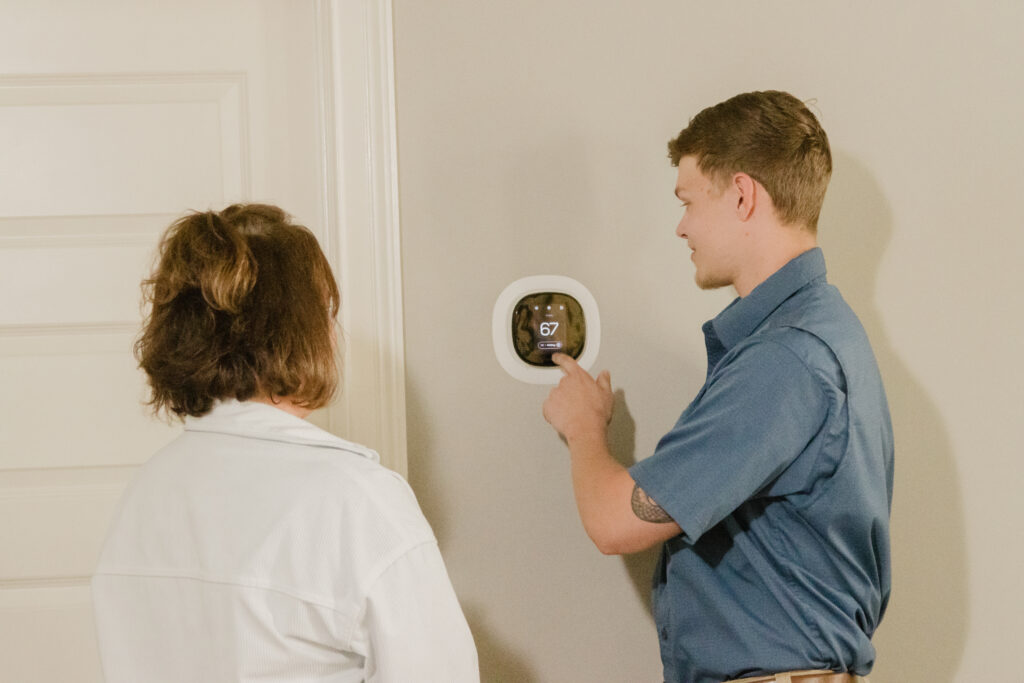
If you’re like most homeowners, you’re probably looking for ways to save money without giving up the comfort of a climate-controlled home. The good news? You don’t have to choose between comfort and cost. Learning how to lower your energy bill starts with smart technology—specifically, smart thermostats that optimize your HVAC system without you lifting a finger.
Why Energy Bills Are Rising for Most Households
From inflation to unpredictable weather, energy costs are on the rise. Increased demand for heating and cooling, aging HVAC systems, and poor energy habits are all contributing factors. Fortunately, new technology is making it easier than ever to reduce waste and regain control.
What Is a Smart Thermostat?
A smart thermostat is a Wi-Fi-connected device that automatically adjusts your home’s temperature settings based on your habits, preferences, and schedule. It can be controlled from your phone, tablet, or voice assistant and offers far more control than traditional thermostats.
How Does It Work with Your HVAC System?
Smart thermostats integrate seamlessly with most modern HVAC systems, acting as the brain that tells your system when to heat or cool. Once installed, they monitor indoor temperature, humidity levels, motion, and even weather forecasts. Then, they use this data to make automatic adjustments that match your comfort level while reducing unnecessary system use.
For example, if your smart thermostat detects that you’ve left for work, it might lower the heat in winter or raise the AC temperature in summer. If you’re heading home early, you can override settings from your phone so it’s comfortable when you arrive. This tight integration with your HVAC system means smarter cycles, reduced runtime, and lower energy use overall.
How Smart Thermostats Help Lower Energy Costs
Smart thermostats are powerful tools for cutting down on your energy bills without changing your daily routine. Here’s how they make that happen:
- They eliminate human error by automatically adjusting temperatures when you’re away or asleep—no more forgetting to turn things down before heading out.
- They learn your habits and create customized schedules based on when you’re typically home, away, or asleep.
- They send usage reports that show when your system runs most often and where your energy is going.
- They offer personalized suggestions to fine-tune your settings and maximize savings.
- They reduce unnecessary runtime, which means less wear on your HVAC system and more money in your pocket over time.
This combination of automation, insight, and efficiency helps you use less energy while still keeping your home comfortable year-round.
The Top Cost-Saving Features of Smart Thermostats
- Learning Algorithms: Automatically adjust to your routine after just a few days.
- Remote Access: Control your HVAC system anytime, from anywhere.
- Geofencing: Adjusts temperature when you leave or return home.
- Energy Reports: Monitor usage trends and get tips to save more.
- Weather Tracking: Modifies settings based on local forecasts.
The real power of smart thermostats is in the data. These devices use sensors, cloud-based AI, and integration with other smart home technology to ensure your HVAC system runs at peak efficiency. Some even detect humidity levels and adjust accordingly.
Manual vs. Smart: Thermostat Comparison
Learning Capabilities:
- Manual Thermostat: None
- Smart Thermostat: Learns your habits over time to optimize comfort and energy use.
Remote Control:
- Manual Thermostat: No remote access
- Smart Thermostat: Yes, can be controlled via smartphone app from anywhere.
Energy Reports:
- Manual Thermostat: Not available
- Smart Thermostat: Provides detailed insights into your energy usage.
Cost Savings Potential:
- Manual Thermostat: Low, due to lack of automation
- Smart Thermostat: High, thanks to efficient scheduling and learning features.
Scheduling:
- Manual Thermostat: Must be adjusted by hand each time
- Smart Thermostat: Offers both manual and automatic scheduling for convenience and savings.
How It Can Affect Your Monthly Bill
While results vary by home, most users report energy savings of 10–23% after installing a smart thermostat. In many cases, the device pays for itself within the first year through reduced energy bills.
Additional Tips to Lower Your Energy Bill
- Seal drafts around doors and windows.
- Change air filters regularly.
- Use ceiling fans to improve airflow.
- Set thermostat to 68°F in winter and 78°F in summer when home.
- Schedule regular HVAC maintenance.
Should You Upgrade to a Smart Thermostat?
If you’re serious about energy savings without sacrificing comfort, the answer is yes. Smart thermostats are one of the easiest, most cost-effective upgrades you can make to your home HVAC system. They’re especially beneficial in larger homes, homes with inconsistent schedules, or those using zoned heating and cooling.
Ready For Your Comfort and Savings To Coexist
Lowering your energy bill doesn’t mean bundling up in the winter or sweating through summer. With a smart thermostat, you can enjoy a comfortable home while using less energy and spending less money. It’s time to make your thermostat work smarter, not harder.
Want to lower your energy bills without the guesswork? On Call Plumbing, Heating & Air offers expert smart thermostat installation and guidance. We’ll help you choose the right model, get it set up properly, and show you how to use it for maximum savings and comfort.
